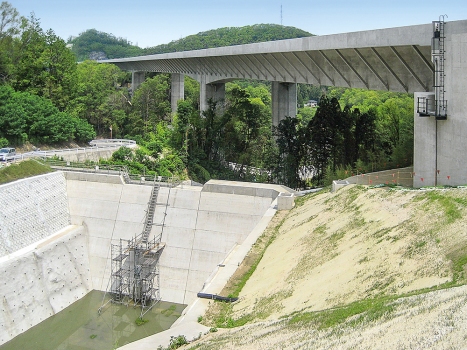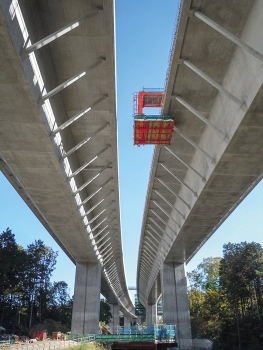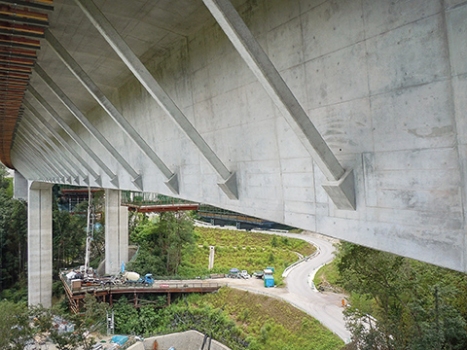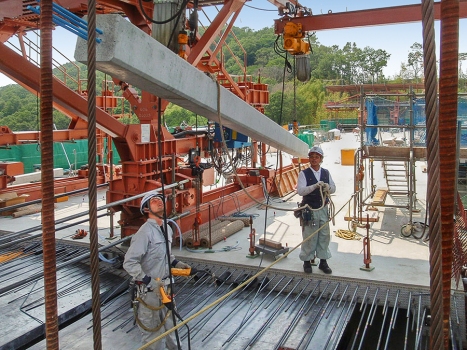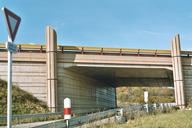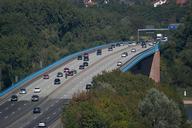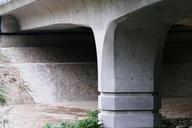The Gunkai-gawa Bridge on the New Tomei Expressway in Japan
The New Tomei Expressway on Japan's main island of Honshu connects Japan's three largest cities with each other. Located between the cities of Toyota and Okazaki in the Aichi Prefecture, the Gunkai-gawa Bridge also forms part of this route. The 740 m long, seven span bridge was built as a continuous rigid frame box girder using prestressed reinforced concrete. The bridge is a rigid frame structure with only two bearings, thus eliminating the need for complex intermediate bearings.
Media
The superstructure of the Gunkai-gawa Bridge was built taking advantage of light weight concrete construction. For this purpose, high-strength concrete was used in some parts of the girder in order to reduce slab and web thicknesses.
Additionally, 650 t jacks were used near both end piers in the hollow box girder in order to transfer horizontal loads before closing the girder at the centre span. This way, the bending moment acting on the end piers was reduced. This method allows a more compact design of the end pier foundations, minimizing adverse environmental impact in the area of the jobsite. Furthermore, the method was the most economic approach.
Caisson foundations for all bridge piers
Caisson foundations were constructed for all bridge piers. In some cases, an angle cut cylinder earth retaining method was adopted in order to reduce the excavation area. The cross section of the main girders is around 15 m wide and was realized as a single-cell box girder section with an extended slab reinforced by struts. To reduce the number of external tendons in the narrow box girder, Sumitomo supplied high-strength strand tendons.
The maximum span of the Gunkai-gawa Bridge is 124 m long.
References
Structure Types
- About this
data sheet - Product-ID
7484 - Published on:
25/04/2017 - Last updated on:
17/11/2021

